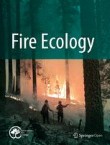Fire Ecology is the official journal of the Association for Fire Ecology.
First-Order Fire Effects Models for Land Management: Overview and Issues
We give an overview of the science application process at work in supporting fire management. First-order fire effects models, such as those discussed in accompanying papers, are the building blocks of softwar...
